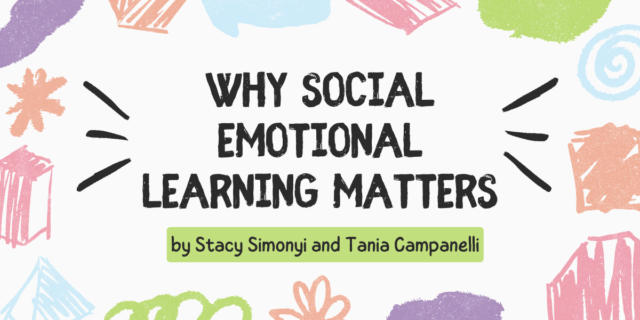
In order to read texts critically, students (and all readers!) need to understand that texts—whether print, video, audio, or online—are constructed things, made by someone (an individual, a team, or an organization) for an intended audience. Too often, students take texts at face value, without the critical reading skills needed to navigate today’s media. The good news is that these skills can be taught and practiced and that students can easily transfer these skills to every aspect of their media consumption, using five simple questions.
It is important to note that critical readers think of these questions in various, repeating, and overlapping orders as they read. They may jump from thought to thought, consciously or unconsciously, as they process a text. Here, I’ve numbered the questions for the sake of reference, but in reality, threads of inquiry and understanding constantly weave themselves together throughout the entire experience of consuming a text.
What am I reading?
When a critical reader encounters a text, their first inclination is to figure out what it is and where it came from. On a basic level, this could mean identifying that a text is a poem instead of a short story, a news article instead of an autobiographical essay, or an instructional video instead of a blooper reel. But deeper questions are embedded in this larger one: in today’s world, it can sometimes be difficult to realize that an online review or informational webpage is really a cleverly disguised advertisement or that a seemingly objective news article is really just persuasive propaganda. Asking yourself what you are reading, who wrote it, what the author’s background or cultural values are, who the intended audience is, and who is ultimately funding the writing and the circulation of the piece is crucial to critical reading and understanding.
What is it showing me?
The most often asked question by any reader, regardless of experience or skill level, is What is the text saying? And of course, it is still a vital question here. But as with the first question, we should help students probe past the surface level. Readers should ask not only what the text is overtly saying but what it is showing—what is between the lines—about human nature, society, and specific issues. This might involve looking at questions around class, institutions, gender, race, and abilities; it might include separating pros from cons in an issue or looking at cause and effect. What a text is saying and showing is the information that a reader can glean from the words.
What is it hiding?
The question of what’s not in the text goes hand in hand with the last question, but it’s one that readers sometimes miss. A text shows but it also hides. Now more than ever, it is important to help students understand this. Perhaps the author holds biases they are trying to disguise; perhaps they are funded by a source that has an agenda. Maybe the logic pretends to be sound but actually is not. Maybe the cited sources are unreliable or the ethical implications of the shown information are overlooked. And sadly, in today’s world, and with children as a target, the algorithms are churning. Readers must ask themselves, What is this site suggesting I read next? What is it suggesting I buy? Whom is it suggesting I follow? Why? What is it perceiving about my thinking and tastes, and what does it want me to do next? If we can help students see even a little of this from an outside perspective, it will help them become more critical consumers of media in all forms.
How am I reacting?
Instead of addressing the next question at the surface level, by simply asking students, “What did you think?” or “Did you like it?” after they’ve read a text, we can nudge students to go deeper within their own thoughts and feelings, to name their emotions more precisely, and to think about their relationship to the text. They might have a relevant and insightful connection, a pertinent question, or an informed, reflective opinion beyond “I liked it” or “I didn’t like it.” They might be in awe of the beauty or sophistication of the piece; they might be inspired to act. Helping students name and explore their reactions will nurture not only their critical reading skills but their critical consciousness as well—something that will benefit them far beyond English class.
How does it work?
English teachers excel at helping students answer the question of how a text works, since traditionally our job has been to focus on the craft, technique, and inner workings of a piece of writing. We might direct students to examine the structure, tone, language, or sensory details in a text. But when we help them look more closely, at the rhetoric, the emotional appeal, the attention-getting elements, and the accompanying visuals, we begin to help students go even deeper with the previous questions about showing and hiding. More specifically, we help students see the connection between writing skill and the writer’s ability to persuade, move, or manipulate the reader.

See the full Reading Response series here.


